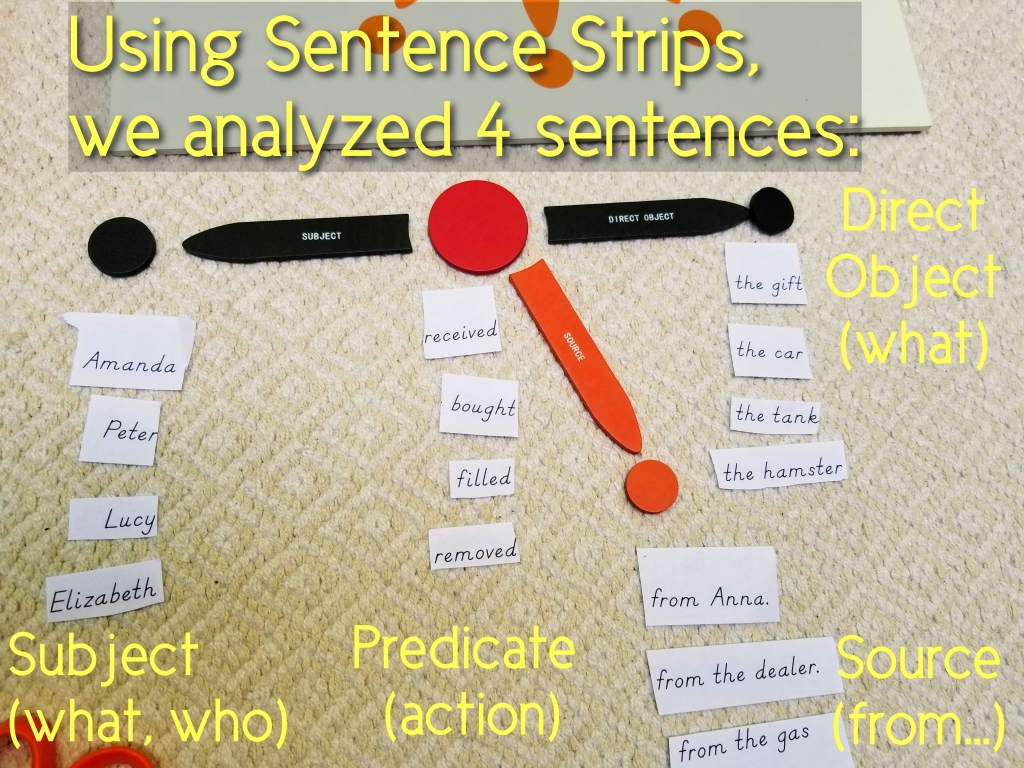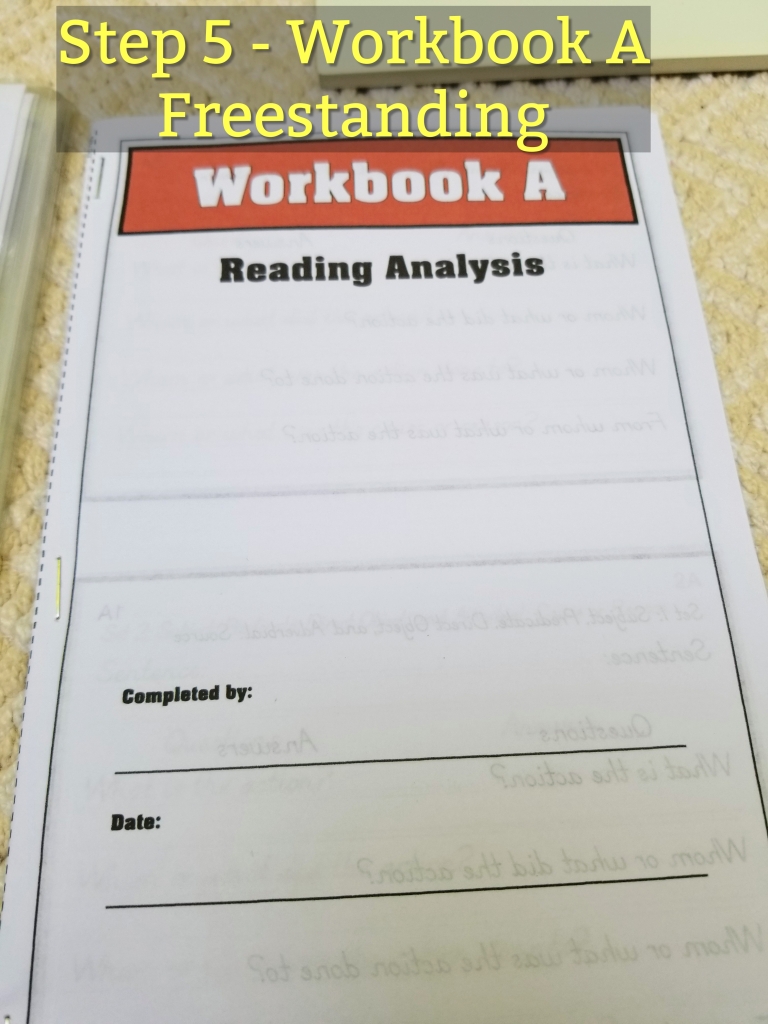Language Arts, 9-12

- Sentence Analysis 9-12 offers an advanced insight on the relationship words have with one another, and on how their positioning hold a key role in the meaning of a sentence. Prior to using this set, children should have some experience with Sentence Analysis 6-9. They will enjoy expanding their knowledge using simple to complex sentences, which subtlety will lead them to acquiring a sophisticated understanding of grammar.
- You will appreciate the amount of guidance and practice opportunities offered. The materials are consistently labeled. You will get the pattern by simply reading the headings of the materials.
Materials
- a 13 page Instructional Guide
- 44 pages of Prepared Sentence Strips (reproducible)
- 16 Prepared Reading Analysis Cards (1A, 2A, 3A…)
- 16 Prepared Logical Analysis Cards (1B, 2B, 3B…)
- 16 Prepared Sentence Cards (Set 1, Set 2, Set 3…)
- Workbook A, Workbook B (reproducible)
- 8 Booklets for Sentence Construction with colorful Pictures (reproducible)


How it works
Step 1 – Cut and Distribute
- The Instuctional Guide contains ALL the visuals to diagram each component (see pictures below). It is the MOST logical guide I’ve seen. If you feel intimated by the complexity of the material, this material has been designed with the child, and the educator in mind.
- For this step, children will select strips of Prepared Sentences to cut and diagram using the wooden materials for Sentence Analysis (sold separately). They will recall their former knowledge, and look for pattern among the sentences. This work will be accomplished with enthusiasm and confidence. The kinesthetic experience of using wooden materials, cutting paper, and placing the pieces will enhance the learning experience.




Step 2 – Answer Reading Analysis Questions
- Reading Analysis Cards help children develop the habit of asking the questions that lead to determining the parts of a sentence. For example, a card may contain a sentence “Mary makes a cake.” The children will record the sentence in their Workbook A, and answer a series of questions such as: -What is the action? (makes). Who did the action? (Mary). With time and practice using the wooden materials, the children begin to associate these questions to the appropriate grammatical terms such as: subject, predicate, direct object.

Step 3 – Answer technical questions
- Logical Analysis Cards will allow children to use grammatical terms to describe each part of a sentence (see picture below). Now, the card is not asking “Who/What did the action?” but “What is the subject?” Instead of asking “What is the action?” the card will ask “What is the predicate?” The answers will be recorded in Workbook B.


Step 4 – Use Prepared Sentence Cards
- This step contains 8 sets of cards of Prepared Sentences, 5 sentences per card. The children have 3 choices:
- One– Using the wooden, children can write the sentences on a strip of paper and diagram them.
- Two– Using Workbook A, children can practice Reading Analysis.
- Three– Using Workbook B, children can practice Logical Analysis.

Step 5 – Be creative
- Step 5 invites the children to utilize all the resources freely. For instance, although Workbook A and B are used with prepared sentences, children can use them to create and analyze their own sentences. Workbooks are a great way to do so. Simply prepare multiple copies so that children can grab one, and go on creating their own sentences. I have experienced it with my children and they loved creating funny sentences to analyse. It was quite funny to read!
Step 6 – Expand with Sentence Construction Booklets
- Step 6 has been the most engaging of all. Because there are 8 components to study (source, cause/reason, purpose…), there are 8 Sentence Construction booklets. Each booklet offers 8 pictures that invite the children to write their own sentences to analyze. Again, the children have been coming up with interesting sentences that I would never have thought of!
- I hope this post has inspired you in continuing teaching Sentence Analysis to your upper elementary learners. It has definitely made a difference in my children’s minds. I am confident that they understand that things can be classified, even sentences!

Disclosure: this experience was made possible thanks to Alison’s Montessori for having the confidence in their house-made products, and letting us try Sentence Analysis 9-12 at no cost, with no requirement on my part. I do write unbiased honest reviews, because I only write about products that work for us.

- Ready for a lesson? Check out Sentence Analysis 6-9 for younger elementary grammar work. Please subscribe to receive notifications for my next reviews.




Thank you for putting this together. It’s very helpful.
LikeLiked by 1 person
I’m very happy that it helps!!
LikeLike